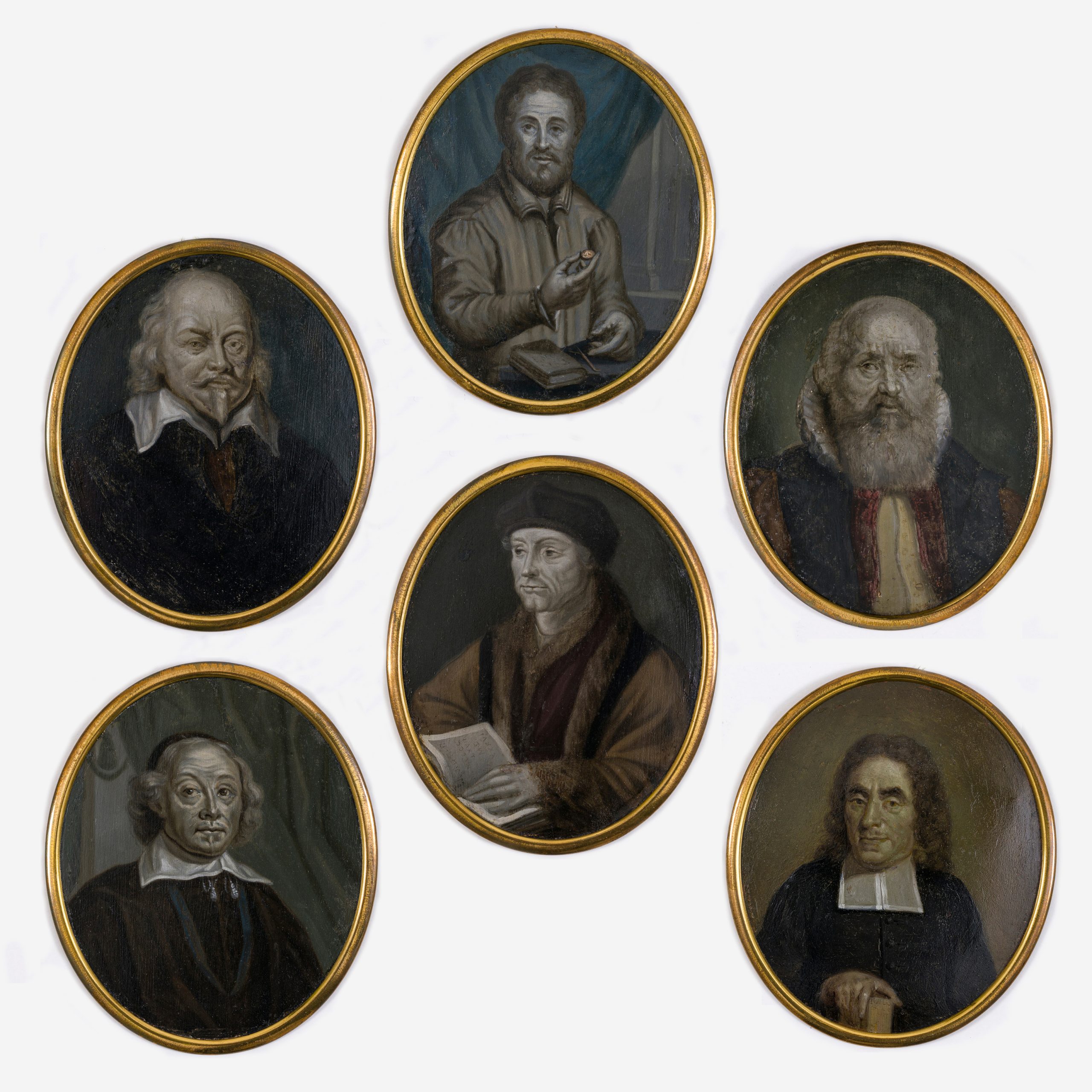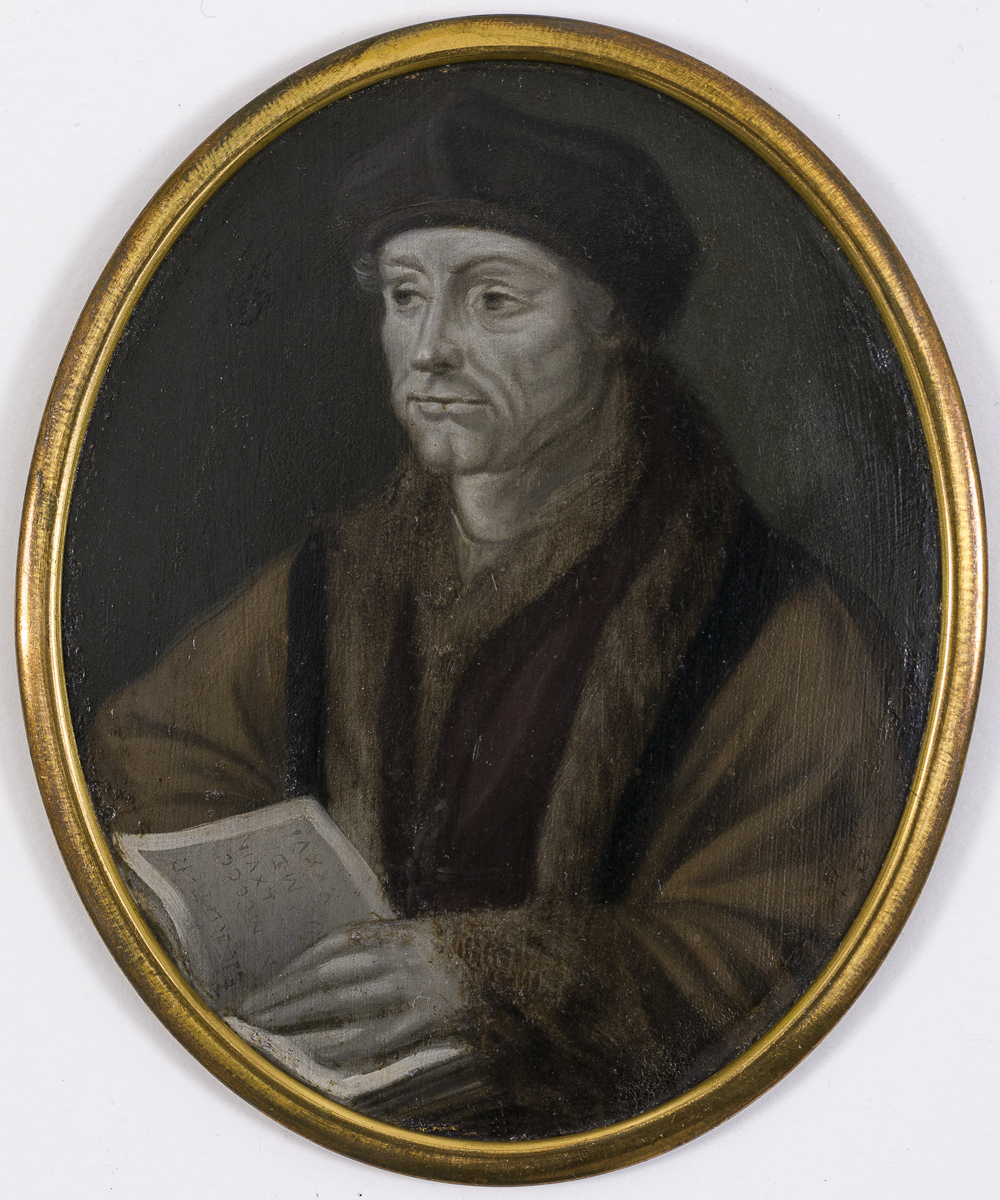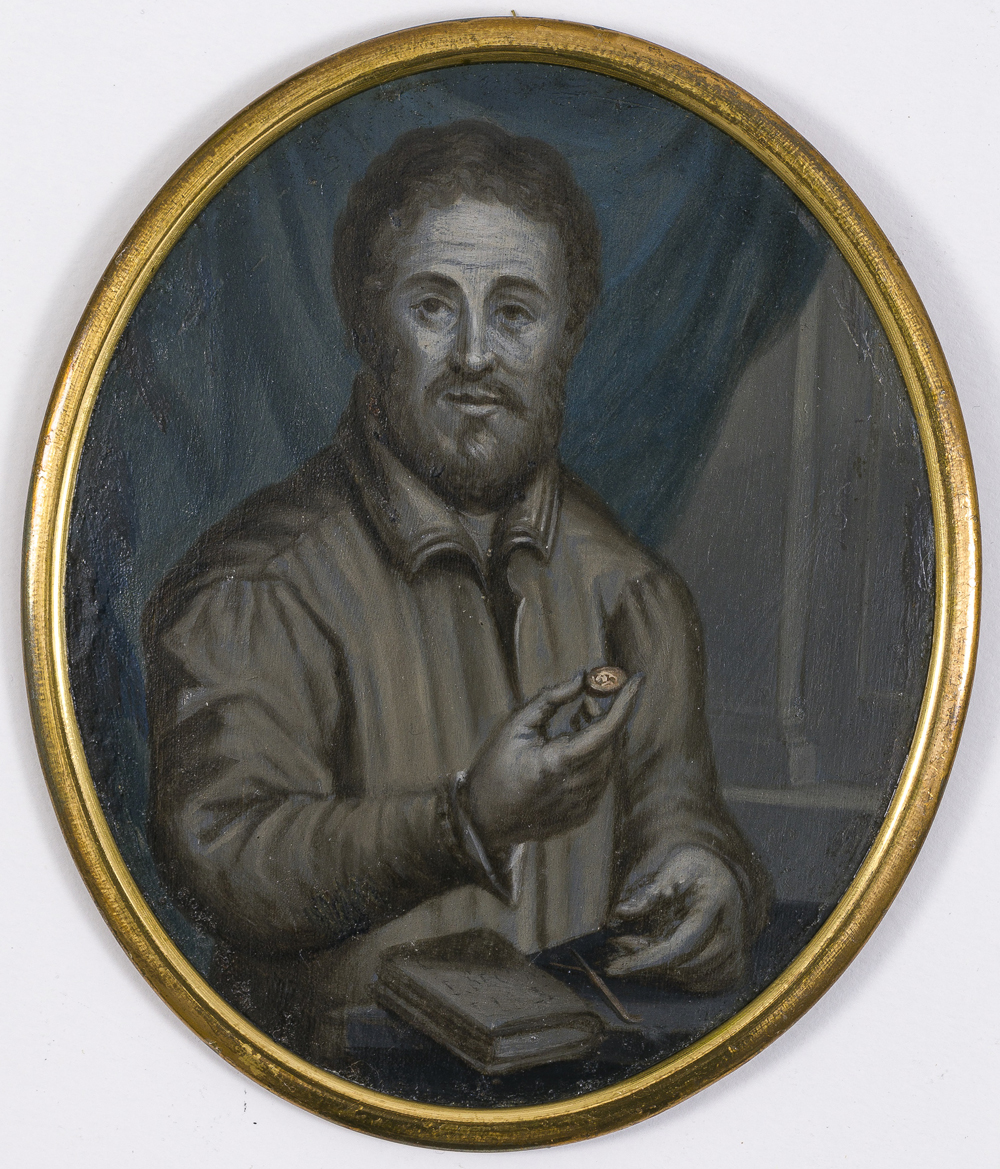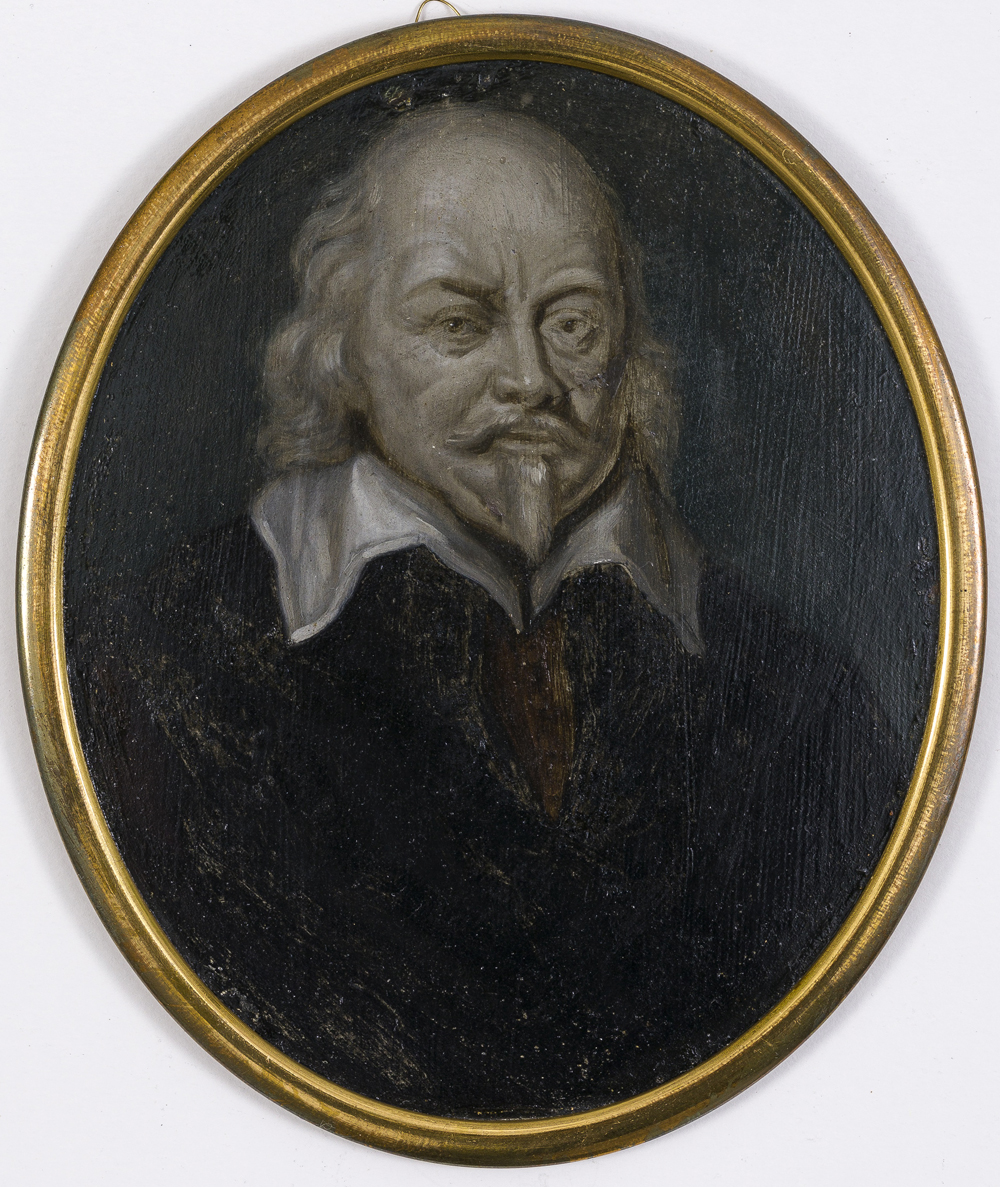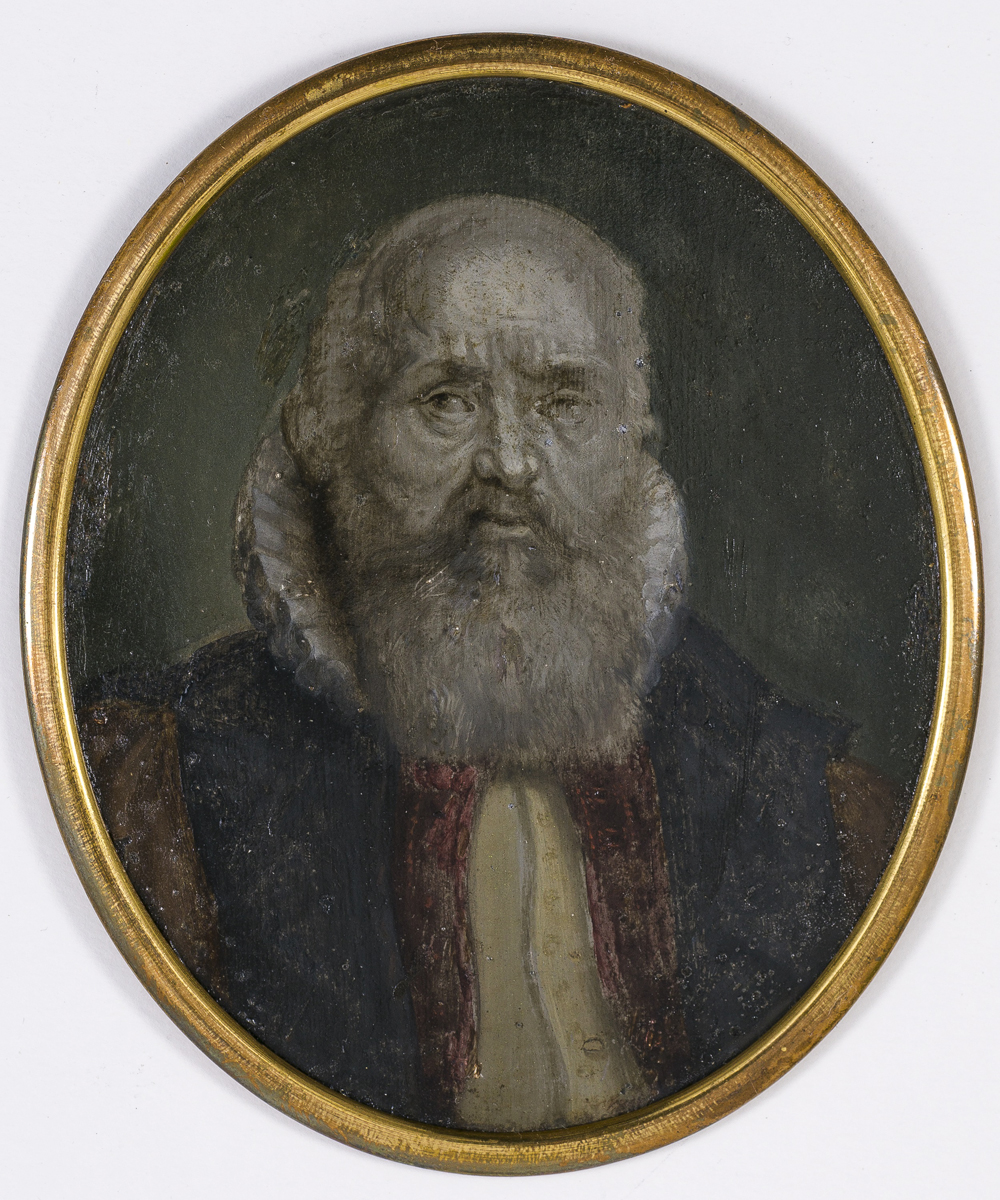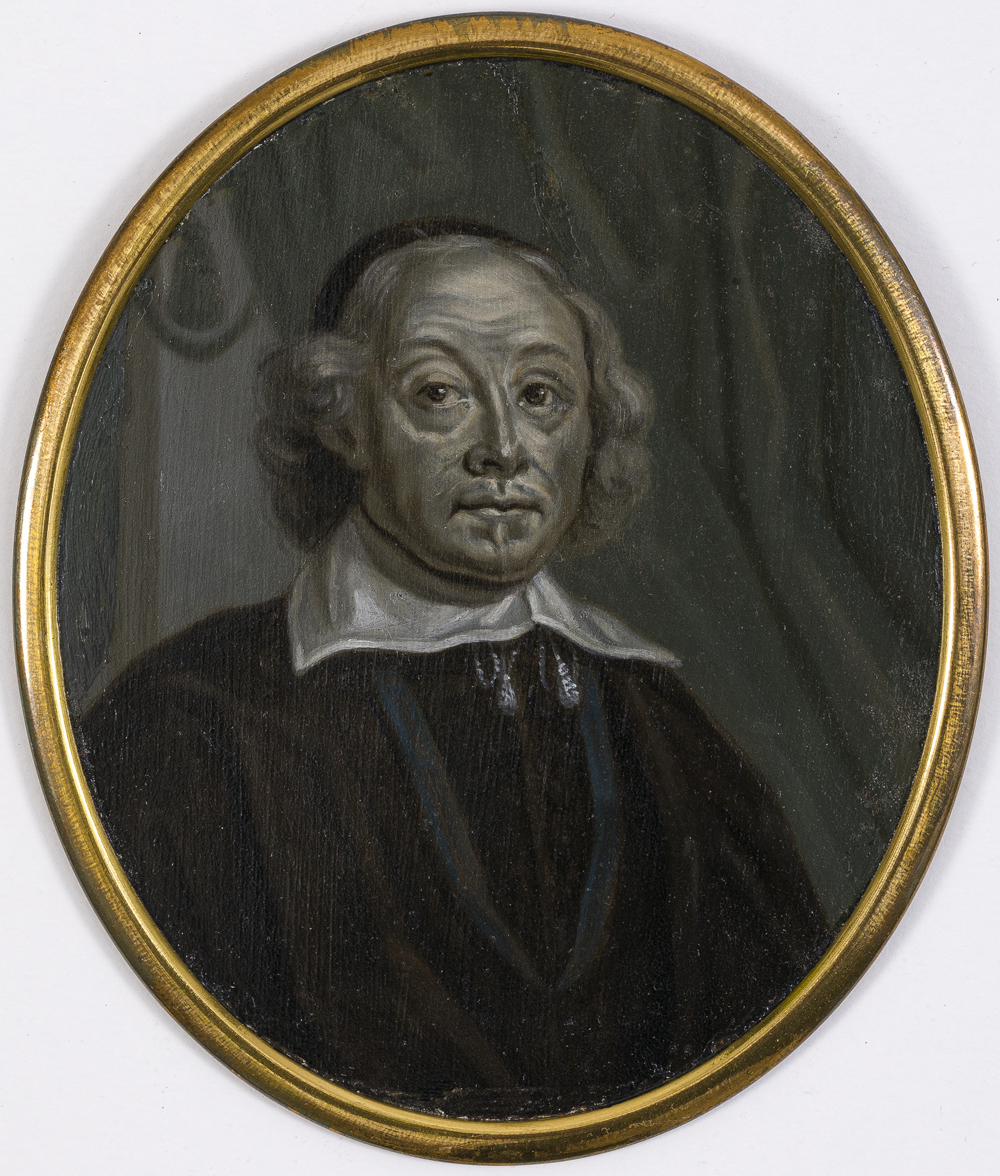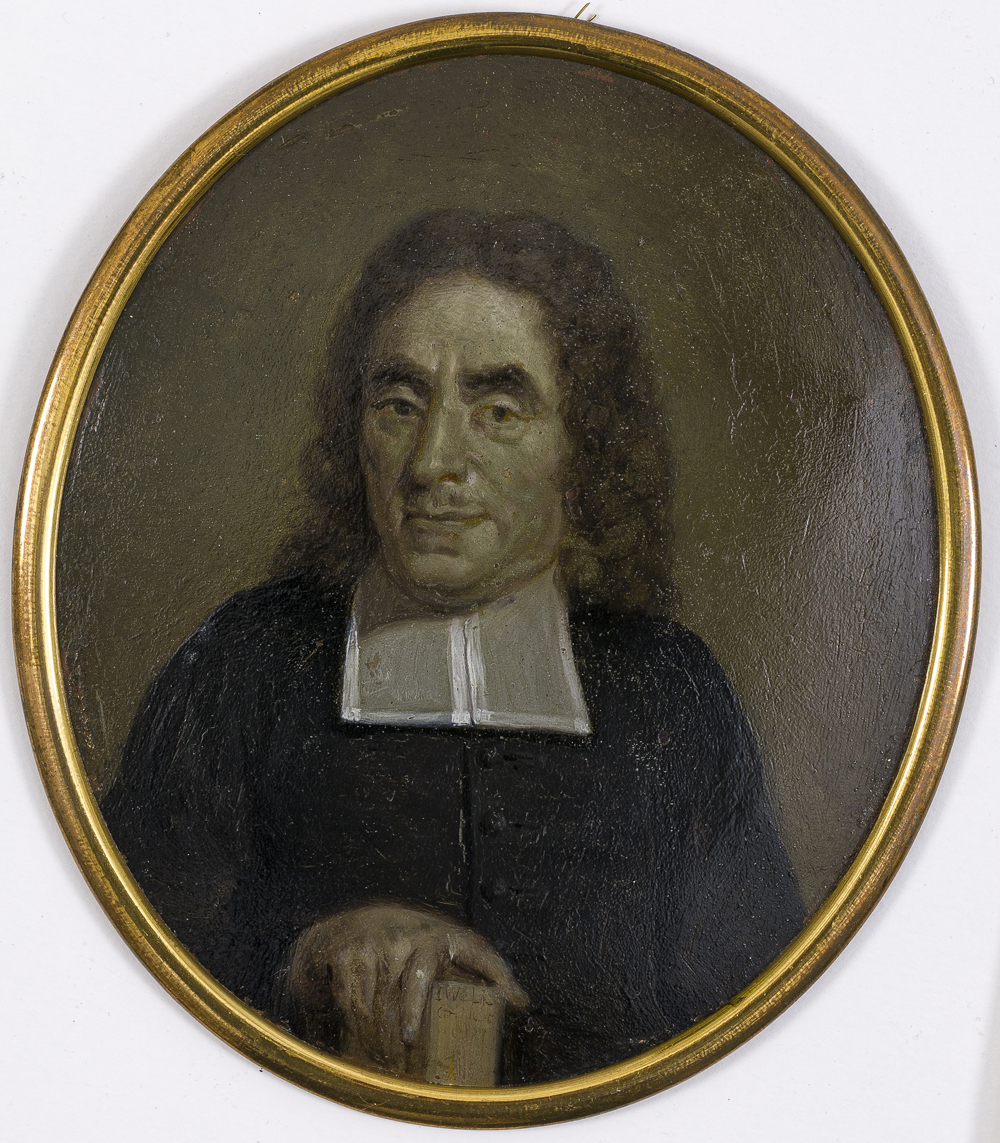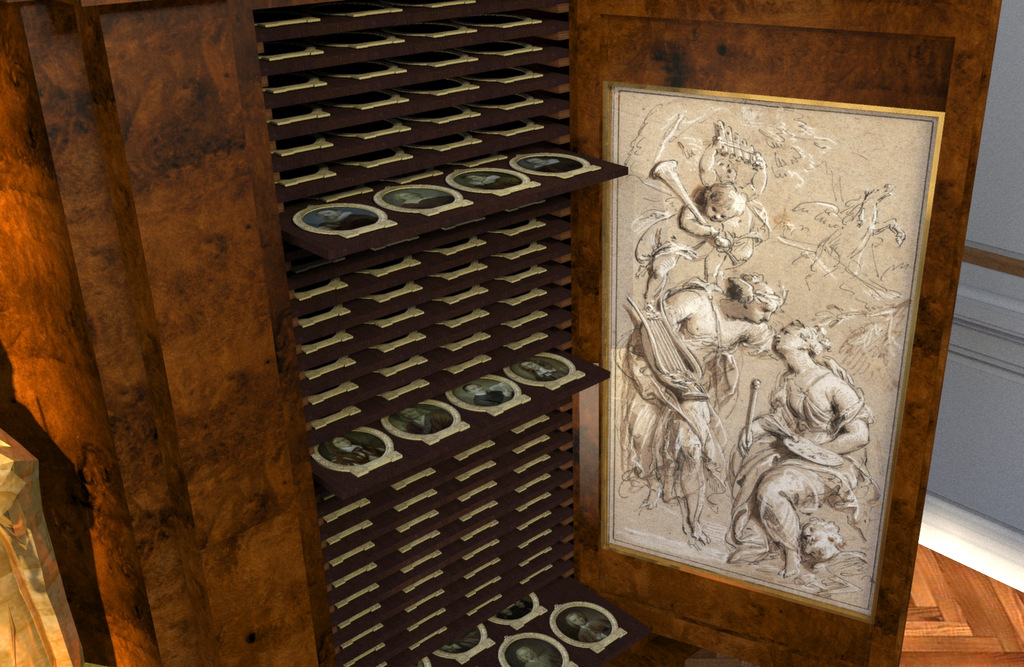ARNOUD VAN HALEN (Amsterdam 1673 – 1732 Amsterdam) and JAN MAURITS QUINKHARD (Rees 1688 – 1772 Amsterdam)
Arnoud van Halen (Amsterdam 1673 – 1732 Amsterdam)
Portrait of Desiderius Erasmus (1466–1536)
Portrait of Janus Secundus (1511–1536)
Portrait of Petrus Scriverius (1576–1660)
Portrait of Bonaventura Vulcanius (1583–1614)
Portrait of Johan de Brune (1588–1658)
Jan Maurits Quinkhard (Rees 1688 – 1772 Amsterdam)
Portrait of Jacob Willemsen (1644–1712)
All oil on tole metal, 10.2 x 8.6 cm, with polished brass oval frames
Inscribed with names and dates of the sitters on the reverses
Provenance
~ Arnoud van Halen (1673 – 1732)
~ The entire collection sold upon the latter’s death in 1732 to Michiel de Roode (1685–1771) for 100 ducats
~ The entire collection acquired by Arnoud de Jonghe in 1771
~ The entire collection acquired by the Leiden poets’ society Kunst Wordt Door Arbeid Verkregen in 1772
~ The cabinet and some portraits damaged during the Rapenburg powder explosion in 1807
~ The entire collection sold in 1819 to Anthony Kluytenaar
~ The entire collection sold in 1849 for fl 725 to the dealer Samson, who dispersed the portraits
~ Private collection, France
***
These recently discovered six miniature portraits of Netherlandish authors were originally part of the Panpoëticon Batavum,1 a collection of some two hundred portraits of Dutch and Flemish poets and authors, commenced by the painter, engraver and poet Arnoud van Halen.2 Commenced around 1700, Van Halen based his portraits on existing examples, mostly engravings. Painted in a uniform oval size, the portraits were contained in a dedicated cabinet, commissioned from Simon Schijnvoet (1652–1727) in 1719, in which the portraits were placed in drawers. In the following year, 1720, a laudatory poem about the collection by Lambert Bidloo was published in Amsterdam, entitled Panpoëticon Batavûm (‘all Dutch poets’), by which name the collection has been known ever since. After Van Halen’s decease, the entire collection as acquired by the Amsterdam merchant and collector Michiel de Roode (1685–1771), who continued to add portraits, made by the painter Jan Maurits Quinkhard (1688–1772).3 De Roode also commissioned Jacob de Wit to paint a grisaille painting for the inside of the cabinet door, representing allegories of Poetry and Painting.
During the second half of the nineteenth century the portraits were dispersed, usually in groups. One such group was acquired by the Rijksmuseum in Venice in 1877, and the museum has continued to collect portraits from the Panpoëticon – to date, they have managed to assemble some eighty-three portraits. A typical example of the Rijksmuseum works is the portrait of the juvenile Hugo de Groot.4
The present group, possibly together since the dispersal in the 19th century, includes some interesting characters, most notably Desiderius Erasmus, known as Erasmus of Rotterdam, the Dutch humanist and philosopher, considered among the most important thinkers of the Northern Renaissance – Erasmus should be considered as the most influential author of the entire Panpoëticon group. Among his many revolutionary ideas, which are often extremely modern in nature, are his reflections on the social position of women, and his observations that they are as able to achieve intellectual prominence as men, expressed in his Colloquia of 1518.
Among the other writers in the group are the humanist Janus Secundus, mostly known for his love poems, especially the Basia (poems on the art of kissing); the chronicler and historian Petrus Scriverius, among the earliest scholars of the Medieval period; the humanist Bonaventura Vulcanius, professor of Latin and Greek at the university of Leiden; the Middelburg writer Johan de Brune, mostly known for his Emblemata, illustrated by Adriaen van de Venne; and the Middelburg writer Jacob Willemsen.
We are grateful to Lieke van Deinsen for her valuable remarks about these portraits.
SOLD TO THE RIJKSMUSEUM, AMSTERDAM
1. For the series, see Lieke van Deinsen, The Panpoëticon Batavum: the portrait of the author as a celebrity, Amsterdam 2016.
2. For Van Halen, see P.J.J. van Thiel, ‘Christoffel Lubienietski's portret van Arnoud van Halen’, Bulletin van het Rijksmuseum 26 (1978), p. 11-26.
3. For Quinkhard, see P. Knolle, ‘Duitse schilders in de Hollandsche school. Hun komst, verblijf en reputatie 1680-1820’, De achttiende eeuw 40 (2008), no. 1, pp. 31-49 and Jane Turner (ed.), The Dictionary of Art, London 1996, vol. XXV, pp. 822-23.
4. Oil on metal, 10.2 x 8.6 cm, inv. no. SK-A-5011.
